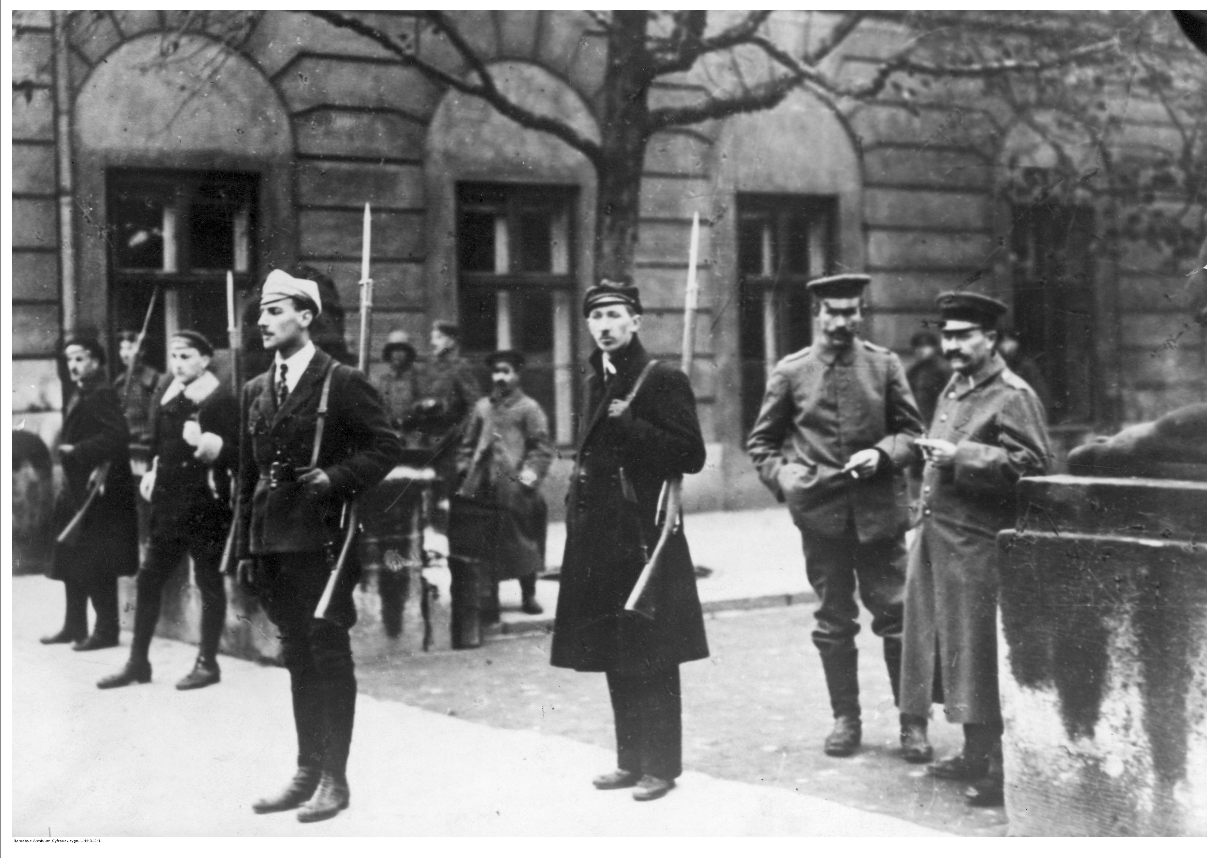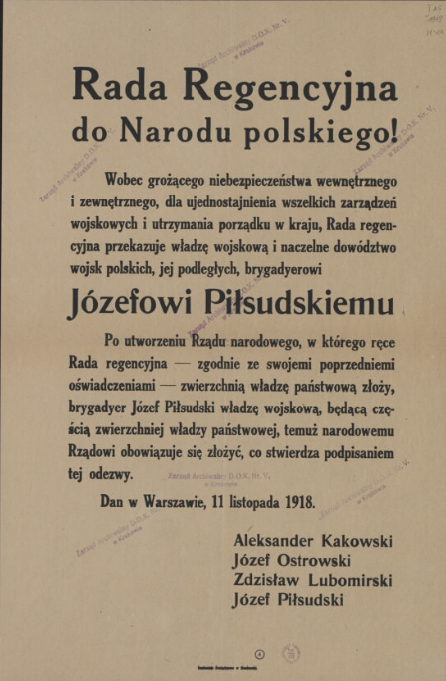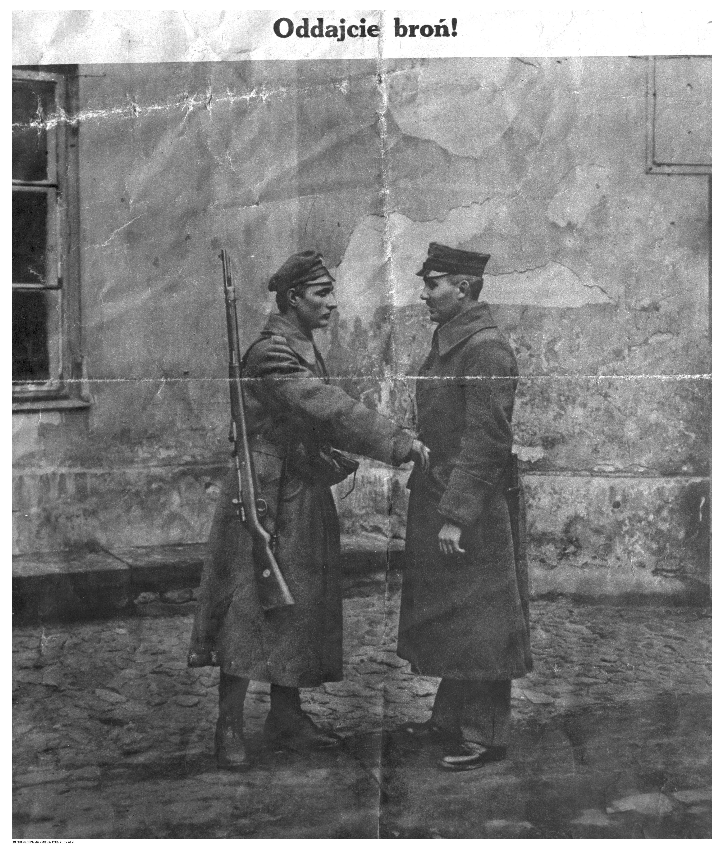On the initiative of Roman Dmowski and Ignacy Paderewski, Polish troops – the famous Blue Army – were established in France in mid 1917. Poles fought the Germans in Champagne and the Vosges, among others. On January 8, 1918, the President of the United States, Woodrow Wilson, delivered a 14-point act proposing the organization of the post-war world. The thirteenth point of this speech concerned the creation of a politically and economically independent Polish state.
In September 1918 the control over the Blue Army was given to the Polish National Committee and its commander was General Józef Haller. The Blue Army was recognized by the Entente states as an independent, allied and only sympathetic Polish army.

The 12th of September 1918 was the date of establishment of the Regency Council, the members of which were Zdzisław Lubomirski, Józef Ostrowski and the archbishop and primate of the Kingdom of Poland, Aleksander Kakowski. The Regency Council appointed a government headed by Jan Kucharzewski. Despite the limitations imposed by the occupants, the Regency Council prepared the most necessary legal acts regulating the key areas of social and economic life. When the government of Kucharzewski resigned, the government of Jan Kanty Steczkowski was established in its place. Later, in October, another government with Józef Świeżyński as its head was set up.
During the peace talks in early October 1918, the Central Powers used President Wilson’s 14 points as a basis. On 7th October, the Regency Council announced Poland’s independence with a special legal act. This document announced the formation of a coalition national government and the forthcoming free parliamentary elections.
At the end of October 1918, the outcome of World War I was doomed. Germany and Austria-Hungary had to acknowledge that they had lost. The Polish Liquidation Committee, established by Wincenty Witos and Ignacy Daszyński, began to operate in Cracow. Its aim was to separate the lands of the Austrian partition from the Habsburg monarchy and join it to the Polish state. On 31st October 1918, Polish flags were hung over Cracow. On 5th November, the Regency Council issued a decree on the organization of subordinate authorities in the Austrian Lublin governorate, which raised the importance of the Regency Council.
On 10th November, Józef Piłsudski came to Warsaw and on 11th November, the Regency Council handed power over to him. The First World War ended on the same day. Germany signed an armistice in Compiègne. German troops stationed in Warsaw were disarmed. About 55 thousand German soldiers were evacuated within 7 days. On 11th November 1918, Jarogniew Drwęski became the mayor of Poznań.


In the years 1920–1936, the anniversary of independence was usually celebrated on the first Sunday after 11th November. First celebrations took place on 14th November 1920. As a result of the Act of 23rd April 1937, 11th November was made a public holiday. Until the outbreak of World War II, the state celebrations were held twice: in 1937 and 1938.
During the German occupation in 1939–1945, public celebrations of Polish national holidays were forbidden. The organizers of the celebrations on 11th November were exposed to severe repressions. Nevertheless, during the Second World War, on 11th November, the following inscriptions appeared on the walls: “Poland is alive”, “Poland will win”,”Poland is fighting”, “Poland has not died yet”, “11 XI 1918”. Articles reminding about the Independence Day were also published in the underground press.
In 1945, the communist government abolished the Independence Day on 11th November and in its place established the National Day of the Rebirth of Poland which was celebrated on 22nd July, the anniversary of the PKWN (Polish Committee of National Liberation) Manifesto. During the Polish People’s Republic, 11th November was the day of illegal celebrations of the anniversary. The participants and organizers of these celebrations were often repressed by the communist authorities. Independence Day celebrated on 11th November, was reinstated by the Act of 1989 called “National Independence Day”.
